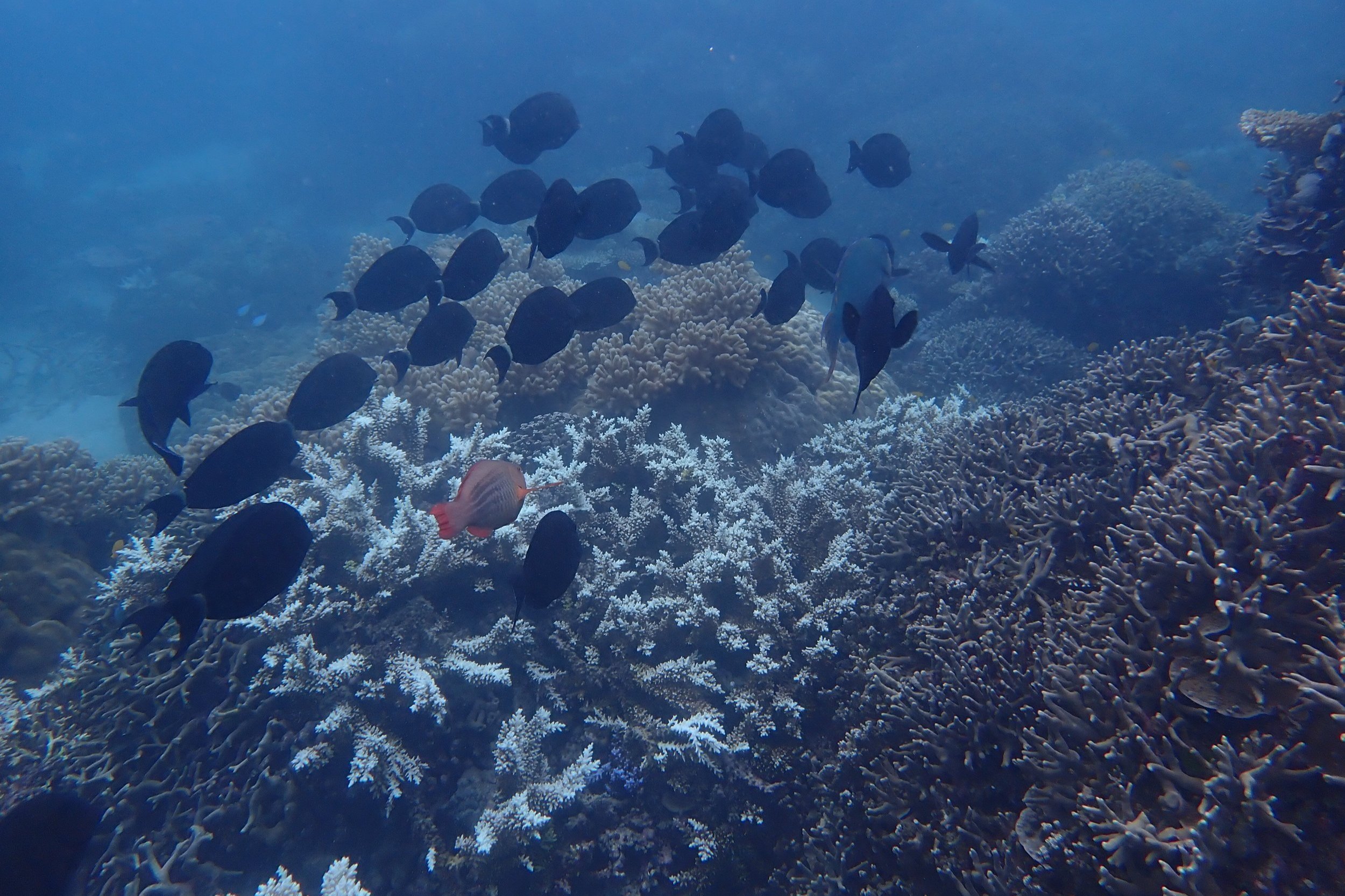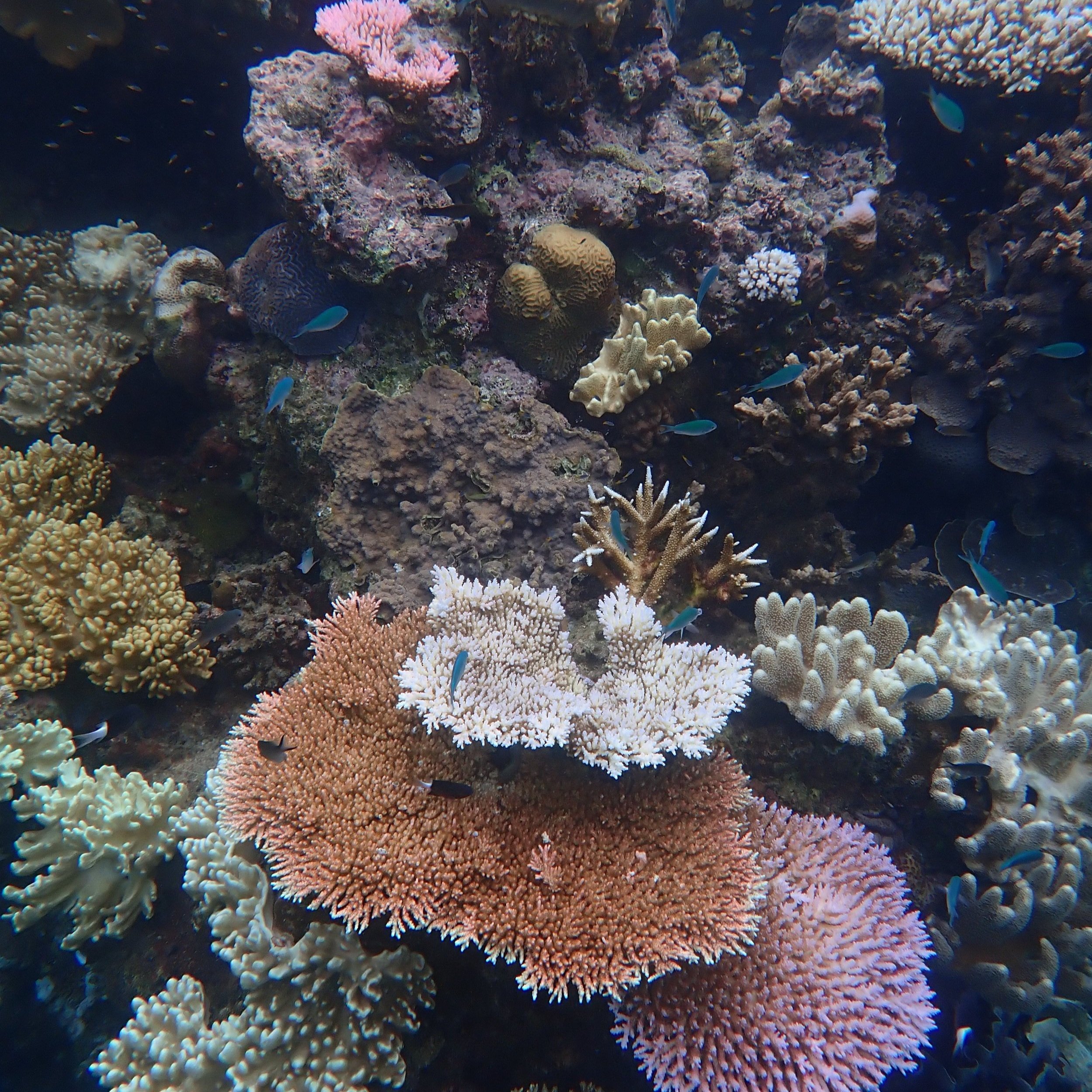The best Great Barrier Reef tour in Port Douglas
After plenty of research (thanks Reddit) we decided to book our snorkelling tour of the Great Barrier Reef with Wavelength. I knew the Great Barrier Reef was going to be cool… but I had no idea how amazed I would be.
Can you go to the Great Barrier Reef if it’s raining?
Because the weather was rainy during the week of our visit, Wavelength were leaving Port Douglas an hour later than usual to make the most of lower tides (and hopefully calmer seas) out at the reef. It takes about 1.5 hours to sail the 50 km out to the first reef of the tour.
But the weather didn’t affect our snorkelling at all. Once you’re that far from land it’s hard to predict if the weather will be the same as you’ve been experiencing. And although it was a little rainy and windy at times, you hardly notice when you’re in the water.
The ride is bumpy – so much so that they make a much bigger deal of seasickness and taking preventative medicines than I’ve ever experienced on a boat tour before. But a little bit of nausea was well worth it for the experience we had.
Stop 1: Ray Ban
Our first stop was Ray Ban on The Opal Reef. This might have been my favourite of the three snorkelling spots we went to. Maybe because it was my first time seeing the reef which made it all the more breathtaking. But on the day of our visit this seemed the calmed and most vivid area. I didn’t spot any turtles or sharks, but there were hundreds of species of brightly-coloured fish and all sorts of other incredible marine life.
Stop 2: Mojo or SNO?
Next we went to a stop just north of Ray Ban (I didn’t catch the name) about 10 minutes away. This was another amazing spot to see the coral up close – too close at some spots as I managed to cut my foot on an especially shallow shelf! Our guides gave tours of the coral at this stop and we got to learn more about coral health and bleaching. We also got to touch a sea cucumber (with the guide’s permission – it definitely isn’t safe to touch them all) and a mushroom coral.
It was at this stop that we saw a reef shark as well as even more species of fish. We saw massive clams with bright blue and purple insides, bright blue corals, and huge shoals of fish swimming in and out of the gullies. It’s all so close and magical, it almost feels like you shouldn’t be there.
Stop 3: Bashful Bommie
Our final stop was Bashful Bommie, named after a Bommy (tower of coral) that’s like a pinnacle under the sea. It was raining and quite choppy when we were at this stop which made it harder to stay in the sea for the full hour as it was more tiring. It’s also a bit larger and deeper than the other areas. But I stayed long enough to explore the massive anemones, moray eels, and giant mounds of coral before hanging up my stinger suit for the day.
Our tour was run by marine biologists who gave various talks on coral, conservation, and how we can help to keep the ocean healthy. We learned about what Coral Bleaching actually is, how it happens, and how Coral regrows. The whole team were friendly, kind, and informative which isn’t always the way on trips like these and definitely makes Wavelength worth the money.
Want to explore more of Australia by sea? Find out about our boat trip to the Whitsunday Islands here.




